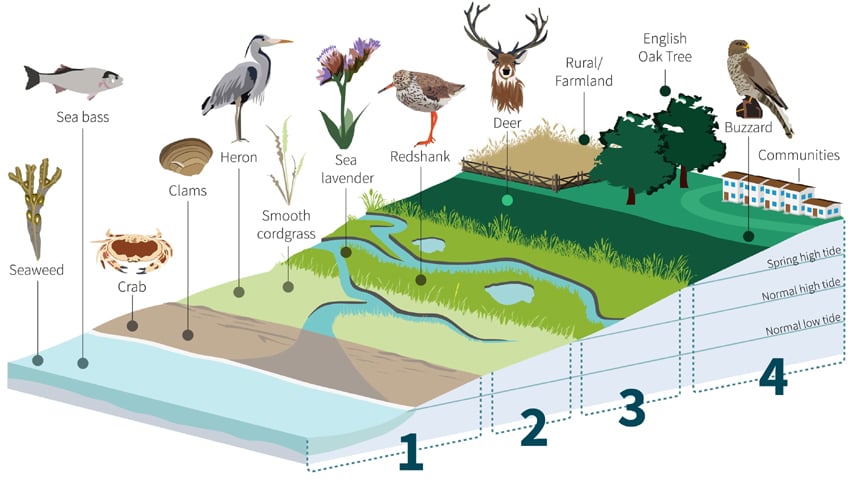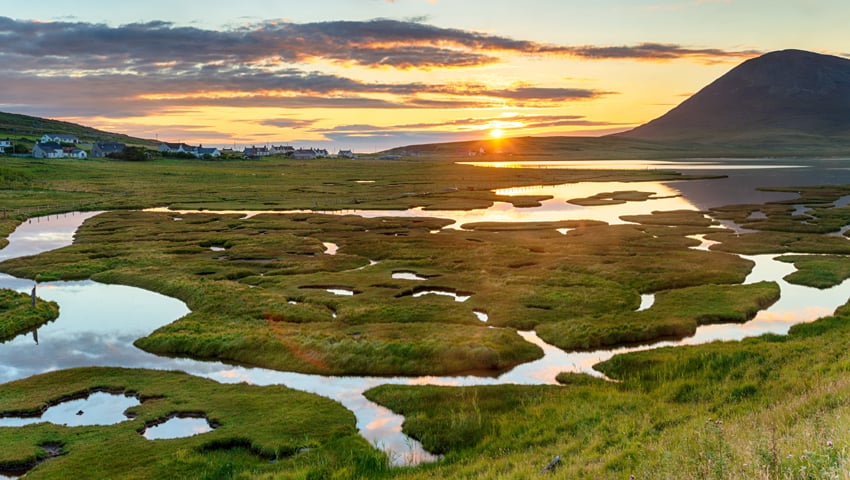Aviva and WWF have announced a new research project on the role UK salt marsh habitats can play in fighting climate change and removing carbon emissions from the atmosphere. This new salt marsh research platform will help scientists assess the carbon storage and sequestration potential of salt marshes across the UK.
The project involves a carbon flux tower being installed on the Ribble Estuary, Lancashire. The flux tower will measure the full carbon cycle to validate the important role of salt marsh as a long-term, natural store of carbon. It will also investigate the effect of rising sea-levels on salt marsh habitats, helping to prioritise areas for restoration and conservation. By live monitoring levels of carbon cycling between the landscape and the atmosphere, this data, combined with traditional methods of analysing carbon stored in salt marsh soils, will show how much carbon is captured, how quickly, and for how long it is stored.
The research – carried out in partnership with WWF, and in collaboration with the UK Centre for Ecology & Hydrology (UKCEH) and the Royal Society for the Protection of Birds (RSPB) – will be shared to better understand the carbon capture and storage capabilities of salt marsh, contributing to establishing a UK Salt Marsh Code.
Claudine Blamey, Aviva Group Sustainability Director, said, “We are delighted to work with WWF to fund research that will make a genuine contribution to the wider understanding of how salt marsh can help us move towards net zero.
“Salt marsh is a precious habitat that removes significant volumes of carbon from the atmosphere as well as being home to a wide range of native and migratory species. It also delivers flood mitigation benefits for the communities based nearby, worth over £70 million for England and Wales, protecting more than 90,000 properties and more than £2 billion of assets.”
Native to the British Isles, salt marshes have a significant role to play in fighting climate change by providing a long-term, natural store of carbon – known as ‘blue carbon’ when stored in coastal and marine ecosystems. Salt marsh is also key in reversing nature loss and creating a rich and unique habitat for plants and animals specially adapted to the conditions. It is estimated that 85% of English salt marsh has been lost in the last 200 years – primarily as a result of historic conversion to agricultural land.
Salt marshes also provide natural protection from flooding and coastal erosion for nearby communities, with remaining salt marshes estimated to provide over £1 billion in flood resilience benefits to UK homes. A 2019 report identified 22,000 hectares of land around the UK coast that could be restored to salt marsh potentially capturing over 300,000 tonnes of carbon dioxide a year.
As the research continues, Aviva and WWF will support the identification of sites that can be restored to bring benefits to the climate, nature and our coastal communities. In doing so, we will help restore an ecosystem featuring iconic native species such as herons, egrets, otters and a variety of marine life including crabs, mussels, clams and various fish species as well as many migratory birds that breed in the UK.
Tom Brook, Blue Carbon Technical Officer at WWF, said, “Aviva and WWF are working together to demonstrate how the business sector can take leadership in moving toward a low-carbon future. Our work will enable sustainable investment in salt marsh as a nature-based solution to tackling the climate emergency, with added benefits to coastal defence, biodiversity, and water quality.”
“Through this climate research, Aviva are also making an important contribution to achieving societal Net Zero ambitions. This project represents a significant step in addressing critical knowledge gaps in salt marsh management, ensuring that blue carbon action is underpinned by robust science and research, driving positive outcomes for climate, nature and people.”

The four areas of a salt marsh:
1. Tidal/mudflat – The lowest part of the salt marsh, an area that is rarely above water other than at low tide. Home to seaweeds, fish, crustaceans and shellfish.
2. Low marsh – Submerged frequently by the high tide. Home to wading birds, grasses, fish and shellfish.
3. Upper marsh – Only submerged during very high tides. Home to a wide variety of grasses and plants as well as nesting for migratory birds.
4. Inland – The border of the salt marsh. Rarely submerged outside of storm conditions. Inland areas receive natural protection against coastal flooding from salt marshes. Home to woodland, grasses, deer, birds of prey and communities.
